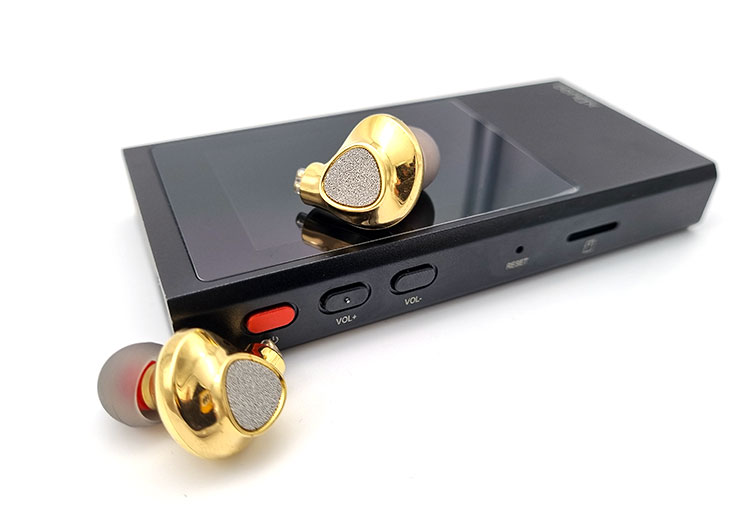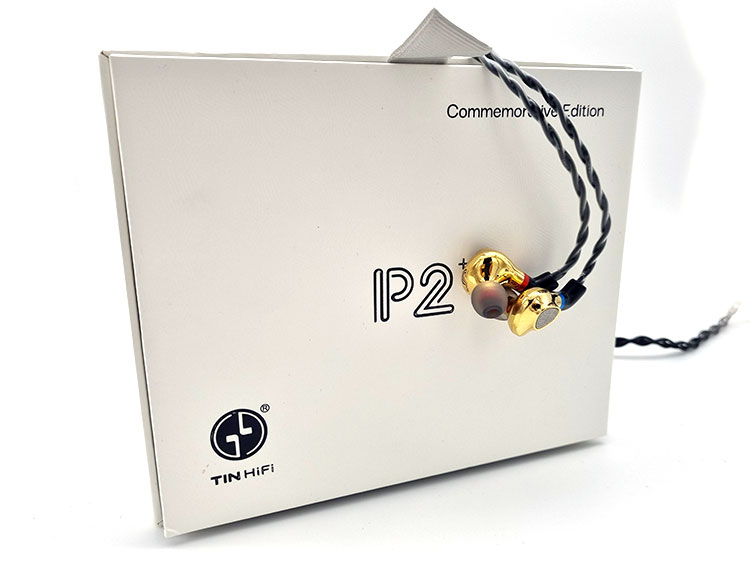Synergy
Efficiency
The P2 Plus’s rapacious need for current allows me to keep this section brief. I had zero trouble with hiss or electrical interference. Nothing is audible except the music precisely because it’s so difficult to power up.
From the Hidizs S9 Pro to the xDuoo X20, audible artifacts are non-existent. But is it an efficient IEM? Far from it. If you have read my P2 review, Tin Hifi has stuck to its guns here.
Power
The P2 Plus is an extremely demanding IEM. It requires more current than my trusty Sennheiser HD58X. Pairing this IEM with a dongle DAC/Amp would be doing this product a complete disservice.
On the Hidizs S9 Pro, the P2 Plus on its 2.5mm balanced output is performing sub-optimally, The P2 Plus’s dynamic range sounds completely stunted, followed up a loosely controlled low-end response.
In fact, my Samsung S21’s digital volume control was set to full. This is a far-from-ideal pairing that severely limits your options for portable use. Given that this is the most powerful dongle DAC/Amp I had in my arsenal, other options such as the ddHifi TC35B faired similarly.
Desktop Amps
On the other end, the SMSL SH-8s headphone amplifier was the only amplifier in my private catalog that synergizes with the P2 Plus on high gain. Only through raw power, can the P2 Plus truly perform in optimal conditions. Even on high gain, the volume pot was set to the 10 o’clock position.
The P2 Plus sounds far less muddled across the FR, with a cleaner soundstage where vocal and instrumental cues are not colliding into one ginormous ball of sound, with each sound indistinguishable from the next.
This is the setup that I utilized for reviewing purposes. The P2 Plus sounds clear, concise, and decays far more rapidly on my desktop setup vis-à-vis a portable one.
The P2 Plus is a highly scalable IEM that responds remarkably well to inordinate amounts of power. Naturally, the quality of your DAC matter insofar that it recreates the subtle nuances, and details that are lost in digital recordings.
But be warned; the P2 Plus is a capricious earphone that requires a power source; sonorous performance is contingent on the source it is paired with. This is by no means, a grab-and-go IEM for casual, outdoor use. Of all the IEMs reviewed in the past, the P2 and the P2 Plus are two of the industry’s polarizing models.
Select Comparisons
Shozy Black Hole
Price: $799
Technical
The Shozy Black Hole is the titular brand’s flagship IEM. Akin to the P2 Plus, the Blackhole fills a very specific niche in the marketplace; fully open-back IEMs. Leveraging a KOOK-designed 10mm dynamic driver and patented electro-acoustic properties, the Blackhole is unafraid to break away from the status quo.
Design
The Shozy Blackhole’s shells are not tropophobia-friendly (your mileage may vary). Each channel features an array of rounded vents, surrounding the entirety of its chassis.
You can sneak a peek at the 10mm KOOK-designed dynamic driver. Each shell is fully milled from a high-quality aluminum alloy and features standard 2-pin female connectors. The included silver-plated cable features a 3.5mm Oyiade termination, and 2 braids per channel.
In comparison, the P2 Plus, the Shozy Blackhole’s matte finish edges out the P2 Plus in terms of surface wear. The P2 Plus’s glossy exterior is far more susceptible to hairline scratches, with increased visibility.
However, the P2 Plus Mogami cables are miles ahead of the stock Blackhole cables. The Blackhole’s cables are flimsy and lack enough structure for them to remain coiled neatly. Consequently, the Blackhole’s cables tend to merge into one contorted mess. Moreover, the P2 Plus’s inclusion of detachable terminations is a feature that the Blackhole neglected to include.
Performance
The Blackhole, is aggressive, while the P2 Plus is assertive. The P2 Plus airy treble-focused presentation amplifies distinctly odd-harmonic elements, with blaring horns and grainy saxophones sounding unapologetically forward.
Thankfully, it does not teether too far away from my threshold for treble resonances. The Blackhole’s in-your-face presentation breathes an ethereal quality into music, with porous/diffuse recordings sounding especially realistic. Unfortunately. It lacks enough mid-bass bloom or a robust sub-bass finish, giving the Blackhole a “Grado” like presentation.
The P2 Plus is an IEM that favors gentle dynamism, and a mellower approach to sonic presentation. Unlike the Blackhole, the P2 Plus’s lower-midrange is marginally more pronounced, but any upper-mid stridency is missing.
Naturally, the P2 Plus is a closed-back IEM, so it does not quite share the exceptional headroom that the Blackhole has across its x-axis. But the P2 Plus’s rounded-out bass response, with a marginally larger sub-bass decay providing much-needed body. Timbre-wise, it is a richer-sounding product at the cost of remarkable high FR performance.

Tin Hifi P2
$349
Technical
The comparison that everyone was naturally waiting for! The younger sibling, vs the older brother. Despite a marked price jump, there are little to no technical differences. My guess? The same planar-magnetic transducer has been heavily modified with mechanical damping to alter the sound.
Design
Unsurprisingly, both the P2 and the P2 Plus are IEMs cut from the same cloth, sharing near-identical design embellishments, apart from a few distinct differences.
Firstly, the matte, satin finish on the P2’s exterior has been replaced with a gold-plated, high-polished finish. As alluded to earlier, the P2 Plus’s surface is more prone to blemishes, scratches, and fingerprints.
Unfortunately, the change in finish feels more of a downgrade in terms of durability. Apart from that, both IEMs share identical design cues, from their shape to their 2-pin recessed connector structure.
Secondly, the P2 cables are distinct, burgundy-red copper cables with a 2.5mm termination. Instead of 4-pin, detachable terminations, it includes additional adapters (2.5 to 3.5mm, and 2.5 to 4.4mm).
The Mogami cable feels hardier, sturdier at the expense of flexibility, and malleability. Aesthetically, the Mogami cables look more conservative, the P2’s copper cables more in-your-face; it’s an apples and oranges comparison.
Performance
Upon further testing, it is crystal clear to me that both IEMs share very similar acoustic properties because of Tin Hifi’s proprietary planar-magnetic technology. However, the P2 Plus is more capable in terms of raw technicalities, albeit with too many corrections being made to compensate for the P2’s previous issues.
The P2 is timbre-realistic, with substantial mid-bass bloat that is proportionally larger than the P2 Plus. Both IEMs are similar in terms of their timbre capabilities, but the “tiny” elevation in sub-bass on the P2 Plus adds much-needed depth to round off the entire FR.
However, the defining trait of the P2 is its screechy, treble glare that emerges on certain tracks with pre-eminent horn and string sections. On the P2 Plus, it does appear now and again, albeit far less often. Staging, and imaging properties on the P2 and the P2 Plus are vastly similar, with the P2 Plus slightly in terms of perceived distance between instruments/vocals.
Tin Hifi has managed to mask many of the flaws present in the P2 with their succeeding model, leveraging a lower-mid boost and tapered highs.
However, there is an argument to be made here that such a restrained approach to tuning may have further circumvented the P2 Plus ability to push the limits of what it could truly do sonically. Nevertheless, this is mere speculation. Overall, the P2 Plus is still a clear improvement across the board.
Our Verdict
The Tin Hifi P2 Plus is a product that was built off the impassioned feedback of audiophiles across the globe. It is a definitive improvement of the P2, albeit with some minor caveats (no IEM is perfect).
In the sub-$1000 price range, the P2 Plus is arguably one of the stronger showcases for this burgeoning IEM technology.
If you’re searching for a mature tuning that capitalizes on the sonic strengths that a planar-magnetic transducer has to offer, the P2 Plus is a solid consideration worth looking at.
Tin HiFi P2 Plus Technical Specifications
- Driver Unit: 12mm Planar-Magnetic Driver
- Sensitivity: 90+/-3dB@1kHz, 0.179V
- Frequency Response: 10-20kHz
- Impedance: 32 Ohms +/- 15%
- Rated Power: 5mW
- Max Power: 10mW
- Max Distortion: 1%@1kHz 0.179V
- Interface: Gold-Plated 2-P Connector
- Cable: 1.6m 4-core braided Mogami flexible coaxial cable, black PVC L= 1250mm
- Color: Gold





